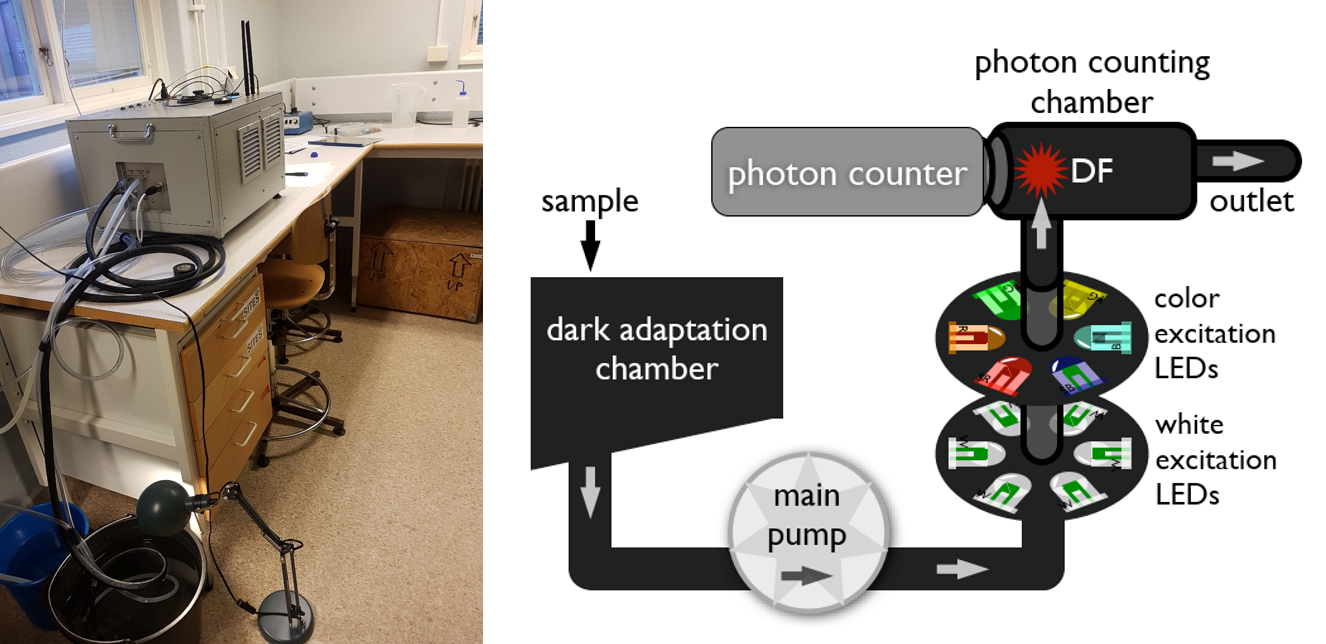The Erken lab has purchased a new instrument that can monitor seasonal changes in the lake’s phytoplankton. It was purchased with a grant from the Malmens foundation to Jorrit Mesman, a limnology post doc, who plans to use the data to improve the calibration of lake phytoplankton models. Beyond that, we expect this monitoring will provide a valuable addition to our ongoing lake monitoring program. The instrument makes use of a technique called delayed fluorescence (DF). A water sample is first adapted to darkness and then exposed to different colored light sources. Following the exposure there is a weak fluorescence signal that lasts up to 100 seconds. Differences in the signal resulting from different colored light can be used to estimate the relative abundance of the major phytoplankton groups (cyanobacteria, chlorophytes, chromophytes and cryptophytes).
Erken staff are presently testing the instrument in the lab and plan to deploy it on the Lake Erken Malma island monitoring station this summer. The island pump sampling system runs year-round so it will provide both valuable information during ice free conditions, but also on the phytoplankton dynamics occurring under ice.

Photo: Delayed Fluorescence instrument being tested in the lab (left) and a schematic of the Delayed Fluorescence instrument (white light excitation is used for additional measurements not discussed here).
For more information on this monitoring method
Istvanovics, V., M. Honti, A. Osztoics, H. M. Shafik, J. Padisak, Y. Yacobi, and W. Eckert (2005), Continuous monitoring of phytoplankton dynamics in Lake Balaton (Hungary) using on-line delayed fluorescence excitation spectroscopy, Freshwater Biology, 50(12), 1950-1970, doi:10.1111/j.1365-2427.2005.01442.x.
Honti, M., and V. Istvanovics (2011), Online monitoring of phytoplankton light response curves using a novel delayed fluorescence device, Lakes & Reservoirs: Research & Management, 16(2), 153-158, doi:10.1111/j.1440-1770.2011.00458.x.